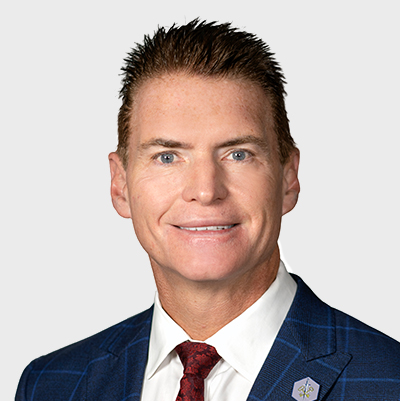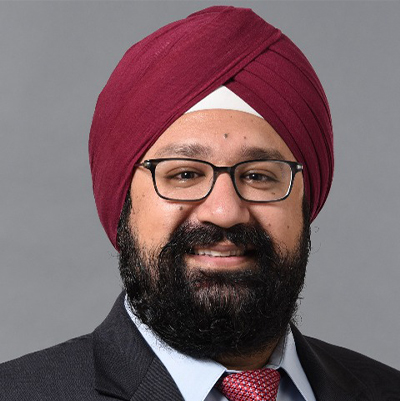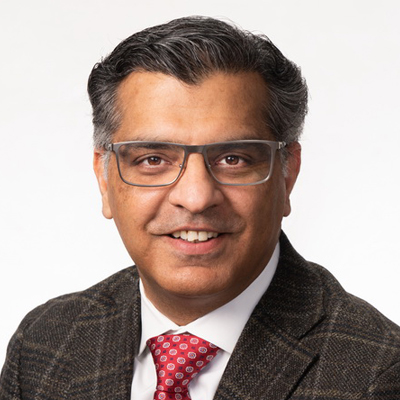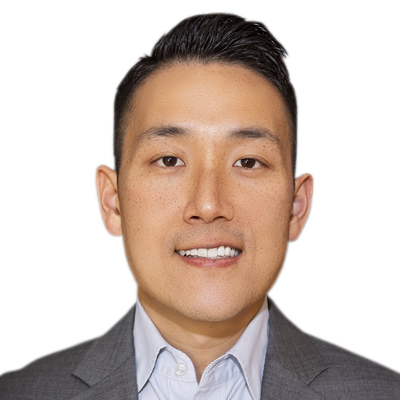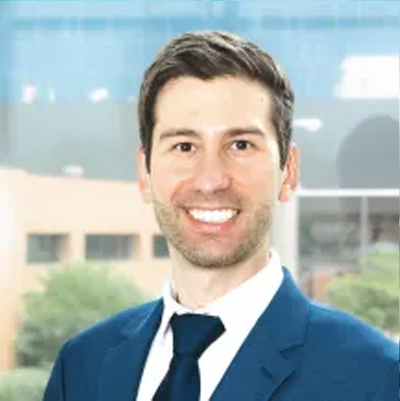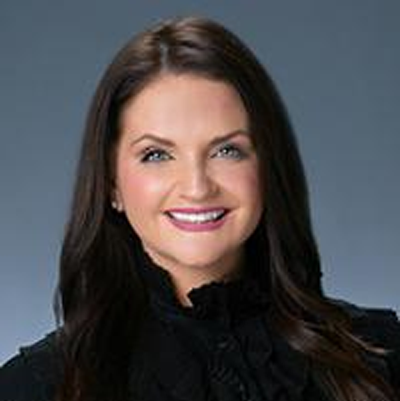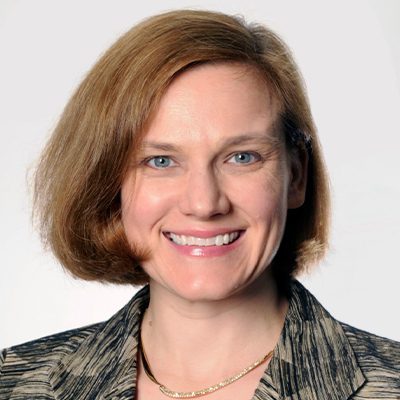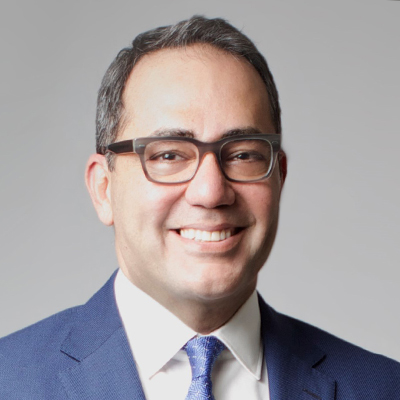We Will Change the World
IN THIS ISSUE:
- Chairman’s Corner
- ISPN Update
- Advocacy and Policy
- Publications
- Young Innovators
- Fellowship Corner
- Diversity and Inclusion
- 2024 Annual ASPN Meeting
- President’s Corner
CHAIRMAN’S CORNER
WE WILL CHANGE THE WORLD
On a Mission:
Can a small group of like-minded people come together and create a medical society that changes the world? We will change the world and because of great members we are in the process and the evidence for this is all around us.
Outreach:
ASPN is committed to reaching out to physicians, researchers, scientists, APPs, and industry to find solutions for common problems, and to develop less invasive and more efficacious options for a larger group of patients in the United States and in many far reaches of the world. This outreach includes the FDA, insurers, investors and other interested parties who play a role in the patient journey.
Guidelines:
The NEURON project is up and running to create guidance for fellow’s training, diabetic neuropathy, lumbar spinal stenosis, peripheral nerve stimulation, endoscopic surgery, social media behavior, regenerative medicine, neurostimulation for non-surgical back pain, sacroiliac joint treatment, radiofrequency ablation, BVN, closed loop stimulation, 60 day PNS, PNS, artificial intelligence and many more areas of interest to patients, insurance providers, and physicians to enhance evidence based care. This guidance will continue and be “living documents” as we advance research and device development.
Scholarship and International Reach:
Because of the generous grant from Anil Sharma, MD and his family foundation ASPN and ISPN will bring two international scholars each year to the United States to learn and develop new techniques in their homelands. In addition, ISPN had our first meeting in Dubai in December, and we had a time of fellowship and collaboration with doctors from 6 continents. We shared ideas and will shape the future for thousands of patients going forward.
Investing in the Youth:
ASPN has been so impacted by our young innovators. In 2024 and going forward we plan additional investment in time and resources to continue to develop the leaders of tomorrow.
Banking on the Experienced:
ASPN has many members with a wealth of experience in private practice, academics, and hospital-based models. We will continue to use this experience to shape our actions, advocacy, and leverage this amazing talent pool to improve the space.
Making lnterventional Spine Great Again:
We will integrate all of these great areas of our society to help and involve you. It is only if members take an active role that we can truly continue this journey to make interventional spine even better than it is today. We are in the beginning of a golden age, but we have much work to do-and we must do it together.
See you in Miami!
ISPN UPDATE
Congratulations, ISPN!!
Reda Tolba, Tim Deer, and Dawood Sayed helped orchestrate a stunning meeting on the Arabian Peninsula in the beautiful city of Dubai! Over 300 registrants from 6 continents came together for the first annual meeting.
Topics spanned every aspect of interventional pain management. scs topics included new indications and the continued pursuit of big data. Peripheral nerve targets are treated with neuromodulation, injection, neurolysis, and balloon tamponade. Minimally invasive and ultra-minimally invasive spinal fusion techniques show continued promise as does the expanding role of posterior SIJ instrumentation.
How might endoscopic decompression and facet RFA add a new step in the treatment algorithm? Ultrasound guided MSK procedures and the future of pain management rounded out two full days.
The weather was spectacular, the food hit all spice notes on the palate, and the sites lived up to the hype.
ASPN ADVOCACY & POLICY COMMITTEE
ASPN Advocacy & Policy Committee Continues to Advocate for Its Members.
Cigna to approve two level basivertebral ablation when medically necessary: Recently, we submitted a comment letter to Cigna regarding their proposed medical policy for basivertebral nerve ablation. This letter requested authorization for up to 3 vertebral body (two levels) treatments when medically necessary (the proposed policy limited the procedure to single level) and raised concerns about Cigna’s 3+ CBT ( Cognitive Behavioral Therapy) sessions preprocedure requirement.
Centers for Medicare & Medicaid Services (CMS) released the final rule for the calendar year (CY) 2024 Medicare Physician Payment Schedule. We want to make you immediately aware of a few key proposals. The proposed CY 2024 MPFSc onversion factor is $32.75, a decrease of $1.14o, r 3.34%,f rom the current CY 2023 conversion factor of $33.89.
Medicare sequestration of -2% has been extended through 2032 and PAYGO cuts of -4% have never been enacted in the past. If Congress fails to act, we will be looking at a total of 9.34% cut in Medicare Physician Reimbursement in 2024.
ASPN submitted their response during the open period for public comment. We encourage all our members to go on fixmedicarenow and urge Congress to reverse these Medicare cuts.
We continue to work tirelessly for our members. Please feel free to reach out if you have policy related challenges in your region.
PUBLICATIONS
A Systematic Guideline by the ASPN Workgroup on the Evidence, Education, and Treatment Algorithm for Painful Diabetic Neuropathy (SWEET) is presently under peer review and pending publication in the Journal of Pain Research.
This manuscript provides the most up-to-date guidance on treatment options. This includes consensus statements on conservative treatment, pharmacological management, and highlighting the novel therapeutic application of spinal cord stimulation for PDN.
ASPN NEURON Workgroup continues to work on manuscripts for 2024. One of the most recently planned manuscripts is Device Explantation Treatment and Evaluation Recommendations (DETER): Best Practices for Managing Neuromodulation Device Infections.
The paper aims to provide comprehensive recommendations for managing neuromodulation device infections, with a specific focus on current evidence regarding antibiotic pouches, closure devices, negative pressure dressings, and other related interventions.
The primary objectives are to review the current state of knowledge, evaluate the efficacy and safety of various interventions, and develop evidence-based recommendations for healthcare professionals.
YOUNG INNOVATORS
This year-2024-has been off to an incredible start!
During the first quarter, the Young Innovators section will be hosting a minimally invasive spine webinar where we will be discussing the management of lumbar decompression and vertebral instability.
This will be a CME event as well as a procedure demonstration following the lecture. As we gear up for our Annual Meeting in July 2024 in Miami, we want to remind all our members that we are actively accepting abstracts for the largest ever meeting for ASPN.
We are looking forward to further involvement from all our members!
FELLOWSHIP CORNER
The landscape in fellowship education is at a crossroads with the dynamic evolution of procedural technologies in minimally invasive spine (MIS). This is in addition to acquiring the comprehensive foundational knowledge required for a pain physician to treat a complex patient population suffering from chronic pain that continues to rise.
Successfully navigating the complexities of fellowship training requires both a steadfast commitment and a proactive, self-driven, self-sufficient mindset. There may just not be enough time during a one-year fellowship training to achieve such proficiency, and many trainees do not have adequate exposure to advanced interventions.
Should an interventional pain medicine residency or a two-year fellowship program be on the horizon?
Unfortunately, the fast pace of growth and innovation outpace the traditional education funding and accreditation systems, limiting the extension or development of such programs yet. As such, many pain societies such as ASPN, in partnership with the pain industry have united to advance fellows education beyond traditional fellowship to fulfill this gap in the educational curricula.
Central to the strategy of optimizing learning is the incorporation of hands-on experiences, such as cadaver labs offered by ASPN and industry, virtual reality based interactive sessions led by faculty outside their institutions, and the use of remote learning platforms.
ASPN has developed a series of Fellow’s webinars focused on surgical skills and MIS. These can be used by trainees to optimize their exposure to surgical skills and MIS beyond their fellowship training.
We are at a pivotal phase in the educational journey for aspiring pain physicians to develop and master their skill set in MIS. As the field continues to evolve, strategic adaptation becomes imperative.
Integrating traditional teaching methods with innovative approaches and society with industry parentship broaden trainees exposure and ensures that fellows are up-to-date with the challenges of a fast-paced evolving specialty with limited training time.
Embracing a mindset of continuous learning, commitment, proactivity, and staying abreast of emerging technologies is paramount. As one of my mentors advised me, a one-year fellowship is just the foundation, and the years after fellowship are of utmost importance to endure this lifelong educational journey.
DIVERSITY AND INCLUSION
Physicians and APPs from over 50 countries joined together at the first ISPN Conference in December 2023. This global convergence reflects ASPN’s commitment to inclusion and diversity as a medical community that embraces individuals from varied backgrounds, ethnicities, genders, and abilities.
An inclusive meeting such as ISPN not only contributes to a more comprehensive understanding of diseases and treatments but also cultivates a culturally competent and empathetic healthcare workforce as well as enhances our capacity to understand and address the unique health challenges faced by different populations.
This commitment to inclusion was also highlighted at last year’s annual ASPN meeting where a notable all-female panel of 8 thought leading physicians in our space was assembled on the main stage to discuss scs selection in practice. It was particularly notable that the topic was not centered around a gender specific topic. This was a historical moment for sure!
Looking forward to 2024, we will continue to invest in new opportunities to maintain a diverse viewpoint. Specifically, ASPN prioritizes engaging with Annual Meeting faculty that is gender inclusive, representative of the range of practice settings from academics to private practice, and comprehensive of young innovators and our revered tried and true Master Class.
Diversity in faculty can bring a range of perspectives, enrich the learning experience, and promote innovation in our space.
Our committee also joined forces with the Social Media Committee to bring you a diverse Holiday Message Reel that was watched and liked by several thousand on lnstagram alone-we hope you enjoyed the seasonal greetings!
The Inclusion and Diversity Committee is actively seeking committee members. Please contact me with your ideas and interest!
PRESIDENT’S CORNER
As a professor of neurosurgery, I see autumn as a time of transitions. New fellows are settling into their training, new graduates are getting well into the swing of things in their practices.
The Pain Fellowship Match is behind us, and I am deep into the process for residency interviews and our own Match. As we take stock of these changes, many of us recognize the need to supplement our professional development, and the programs at ASPN can offer support.
Dr. Tim Lubenow coordinates a masterful webinar series for fellows on the basics of practicing pain medicine. The Young Innovators kicked off their webinar series with practice tips and tricks for boards and CME last month.
I would encourage you to check out these offerings and all the archived webinars. which are available to you as a member. ASPN takes pride in the resources, evidence, and information about therapies that we create for our society.
If you have ideas for topics, please share your suggestions and help us to expand our collection! This is your society, and we will make it even better with your energy and enthusiasm.
Thank you for your membership.
2024 ANNUAL ASPN MEETING
The ASPN Annual Meeting has experienced exponential growth to become one of the biggest conferences in our space over the last few years.
The convergence of various specialties, including lnterventional Pain Medicine, Radiology, Neurosurgery, and Orthopedics has clearly created a collaborative environment conducive to networking, communication, and education to improve care.
Chronic pain patients around the world are often cared for by a number of specialists due to the complicated nature of their condition and the need for a multidisciplinary approach. This is the very reason why the multidisciplinary ASPN Annual Meeting has evolved into the desired venue for such specialties to come together.
The theme of this year’s annual meeting, “Building Bridges to Better Healthcare,” was inspired by our goal to increase inter-specialty collaboration.
We have come to realize that there is no better way to provide our patients with optimal care than to embrace all specialties relevant to our space for integrated research, communication, and improved understanding.
The medical world is evolving and so are the tools we use to care for our patients. Minimally invasive spine procedures are more prevalent among pain physicians than ever before. Although this may seem threatening to some surgeons, others are welcoming the opportunity to help evolve these technologies and work with their colleagues to optimize skill sets and patient selection.
Collaborative research has often been the mantra of academic institutions; however, the time has come for all physician communities to work on the same projects for the one common goal: our patients.
The Annual Meeting’s agenda is an exciting one with some new and relevant topics to our audience. ASPN is honored to work with faculty, industry, and key opinion leaders who are shaping the future for all of us.
The 2024 meeting will be no different. Aside from the invaluable expert panels, we are continuing the highly anticipated abstract presentations throughout the Annual Meeting.
As such, the meeting is carefully designed to attract the most faculty with various expertise for in-person networking and collaboration, while providing the attendees with the latest evidence for optimizing patient care at the same venue.
We anticipate the 2024 ASPN Annual Meeting to be our biggest ever. So it is highly recommended to register and book hotel/travel as early as possible.
The executive committee, the organizing team, and I hope to see everyone in Miami from July 11th through the 14th.
PRESIDENT’S CORNER
Navigating the Chills of Winter
Fellow members, as I experience the dark departure from my clinic in the chilled evening air of wintertime, it’s a time for reflection not just on personal resolutions but on the challenges and opportunities that lie ahead for the practice of pain medicine. The first snow reflects the blank canvas upon which we write new chapters in healthcare innovation, and I see amazing new possibilities for what we do for patients and for our space.
So, let us take a moment to acknowledge the challenges we face. We are navigating a healthcare landscape rife with complexities: workforce shortages, rising costs, technological disruptions, and ever-evolving public health and insurance landscapes. These may feel like icy winds against our faces, but they cannot stop us.
Just as the tips of budding plants poking through the soil whisper promises of renewal, so too does our profession hold the potential for a bright spring. Here are a few possibilities that light the way for us.
Embracing technology:
Let us harness the power of artificial intelligence and digital health tools to empower ourselves and our patients. Imagine streamlining diagnoses, improving efficiency, and providing better access to care, all while freeing up valuable time for personalized interaction.
At our annual meeting in a few months, panelists will bring innovative applications to you including virtual and augmented reality, big data-informed algorithms, and Al powered decision-making.
Elevating empathy:
In the increasingly digital age, the human touch remains paramount. Let us prioritize active listening, compassion, and genuine connection with our patients. Their stories, hopes, and fears matter just as much as their symptoms and impact their outcomes. The art of medicine is in how we apply the evidence and data to individuals to ensure best outcomes.
Advocating for change:
We have a voice, and let us use it! Let us identify the ways we can incorporate new technologies to improve patient quality of life.
Your work with us will help advocate for equitable access to healthcare and for policies that support both patients and medical professionals.
Even amidst the potential for innovation and progress, we must acknowledge the pain points that persist. Burnout, compassion fatigue, and the ever-present threat of moral distress are real challenges that can chip away at our resilience.
We must address these issues head-on, providing support for our colleagues and fostering a culture of selfcare and well-being.
Remember, we are not alone in this journey. We are a society, a community of dedicated healthcare professionals. Let us lean on each other for support, share our knowledge, and celebrate our victories. Just as spring follows winter, brighter days lie ahead for us all.
If you are cozied up on a cold, snowy day, consider checking out the ASPN YouTube library of recorded webinars. Informative and entertaining, you’ll be inspired to learn more or perhaps even to bring your own topics to ASPN for our next season.
As always, your leadership is open to ideas for how to improve what ASPN can do for its members.
Thank you for all you do, in winter and every season.
